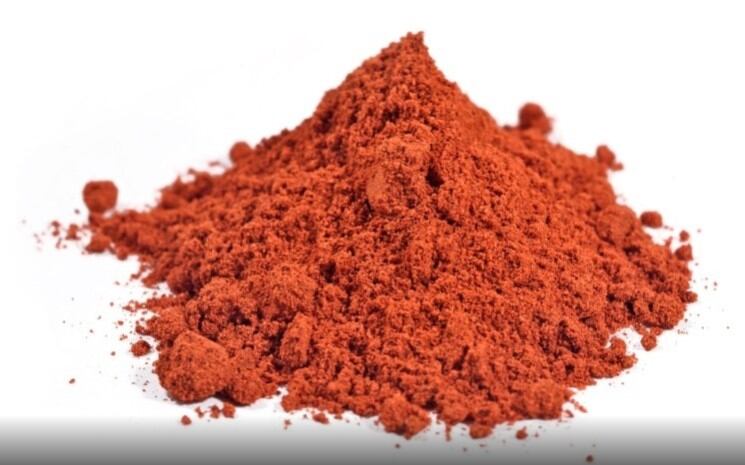Microalgae such as chlorella (Chlorella vulgaris) and spirulina (Arthrospira platensis) have firmly laid claim to being the industry’s latest ‘superfood,’ buoyed on by its omega-3 oil content as well as its array of essential nutrients such as proteins, fats, calcium, iron, zinc and vitamins.
But in catering to the everyday consumer, microalgae’s versatility may well be tested by a new generation of consumer that characterises the fast-developing sports and nutricosmetic industries.
Can this food ingredient source offer those specific health benefits demanded by a more discerning audience, who also want sustainable alternatives to traditional animal-based foods?
“One of the obstacles associated with the use of microalgae within sports nutrition is the relative availability of the nutritional content based on the digestibility,” explains Andrew Spicer, CEO of UK-based microalgae specialists Algenuity.
“This varies across microalgae types. Traditionally, cracked microalgae cells overcome the natural digestibility barrier of some microalgae - but this increases price and potentially product shelf-life.
“Another obstacle that has limited microalgae uptake as a source of nutrition is the colour, generally an intense green or green-blue colour, and the flavour, generally very bitter and also even fishy.”
Production evolution
As Spicer explains, the treatment of microalgae during the production process remains something of a bottleneck with microalgae firms taking steps to enhance microalgae growth rate, product synthesis and nutrient bioavailability.
Perhaps more crucially, these steps have proved more cost-effective driving down the overall price to research and develop microalgae-related products.
A fermentation-led model for example could release a higher productivity production process for certain microalgae that would be cheaper.
When compared to the outdoor production of some microalgae such as Chlorella species, a closed, controlled fermentation-based production model could yield a 25-50-fold improvement in productivity.
This production platform may well be more desirable than most outdoor production platforms with regard to environmental impact.
Liat Shemesh, a Marketing Manager at Israeli-based Solabia-Algatech Nutrition, a firm specialising in the commercial cultivation of microalgae, adds to the sustainability factor saying, “Our company implements a unique closed cultivation technology that is fully controlled and exposed to the natural sun light which is used as our main energy source.
“Using natural resources, implementing sophisticated water recycling system and unique experience in microalgae scale up and most importantly our passionate team are the main reasons for our success in producing cost- effective products for more than 25 years.”
Nutricosmetic adoption
With such start-ups like Yemoja developing a ‘super intensive’ growing platform for microalgae, with the baby food and sports nutrition categories in mind and Spirulina touted as a protein source for a sports nutrition drink, microalgae’s role in this sector seems assured and with it much promise.
The same could be said for microalgae as an ideal ingredient for the nutricosmetic sector owing to its portfolio of skin-friendly nutrients that includes its protein, amino acids and carbohydrate content, as well as lipids, vitamins, and trace elements.
“Moisturising, brightness, firmness of the skin, slimming and protection are all arguments claimed by industrials,” says Shemesh.
“The ability to cultivate microalgae in an eco-friendly technology is a key reason to prefer microalgae-based ingredients.
“AstaPure Skin is a natural astaxanthin sourced from the Haematococcus Pluvialis microalgae and supported by clinical studies showing its ability to prevent pre-mature aging of the skin. It can be applied topically but mainly used as an ingredient for “beauty from within” applications.
Indeed, Yemoja is in the spotlight once again with plans to open a production plant that uses photobioreactor technology to produce algae-derived porphyridium cruentum as a skin care formulation ingredient that encourages collagen and elastin expression and maintain skin hydration.
“The polysaccharide has been investigated for its ability to be merged into various biotechnological applications and industry disciplines including, cosmetics and biomedicine,” Yemoja CEO Eyal Shalmon said back in June 2020.
“The soluble polysaccharide fraction is already being used in skin care products and in a considerable number of cosmetic formulations due to its anti-inflammatory and anti-oxidant properties.”
Cosmetic regulation
Other firms within this space includes French ingredient major Silab, which ramped up activity for its yeast, bacteria and microalgae-derived bioactives for skin and hair care by injecting €5m to create a second on-site production line for unicellular organisms.
Meanwhile larger firms such as Algenuity – the Algal Biotech Division of Spicer Consulting – considers marine biotech a hot focus area in the cosmetics industry, although as Spicer explains, its not without its challenges.
“Yes, this is potentially a very large market opportunity. The primary barrier is the registration requirement within approved cosmetics ingredients databases such as the IECIC 2015 (Inventory of Existing Cosmetics Ingredients in China) and CosIng (European Cosmetics Ingredients Database).
“If an ingredient is not included in either or both of these inventories then getting it added is costly with regard to both time and money.
Other challenges highlighted by Spicer includes the rising movement towards fully declared organic status for cosmetic ingredients.
Some microalgae are already potentially highly attractive as cosmetics ingredients as they are already included within one or more databases as approved ingredients,
Others would only be allowable under a generic 'algae' or 'algal extract' designation, grouping them with seaweeds and lowering their potential market value as specific ingredients.
“The organic movement means that cultivation methods need to be designed to meet these standards. In practice this is not difficult to achieve for those microalgae that are already being cultivated for human consumption,” Spicer adds.
Diabetes and obesity epidemic
For some firms in the microalgae space though, its health benefits could well be better served on a wider population, maintaining and supporting good health rather than products or applications that enhance, boost or improve attributes characterised in the sports and cosmetics industry.
The diabetes and obesity epidemic are two such examples with microalgae strains, such as Aphanizomenon flos-aquae, Chlorella, and Arthrospira, reportedly exhibiting anti-hyperglycaemia and anti-hyperlipidaemia effects.
“In our opinion, the daily consumption of microalgae will be part of the solution,” says Joana Laranjeira da Silva, Plant Manager at Allmicroalgae, a Portugal-based producer of microalgae particularly Chlorella vulgaris and Nannochloropsis sp.
“The anti-hyperglycaemia and anti-hyperlipidaemia activities of Chlorella by Allmicroalgae have been demonstrated.
“We are now focused in developing Chlorella vulgaris more attractive for the overall consumers to put this food ingredients in the overall population.”
Shemesh also highlights Fucoxanthin, a carotenoid found naturally in the microalgae Phaeodactylum tricornutum as potentially useful.
“In addition to its excellent anti-oxidative benefits, fucoxanthin in the form of a dietary supplement may support lifestyle related diseases, including overweight, management of lipids and glucose levels.”
Supplements ‘the best route ‘
Spicer also sees much potential in this area but comments that market uptake would have to proceed any benefits and the percent incorporation of these ingredients in foods and beverages would need to increase substantially for any benefit to be realised.
“Reported biological effects are associated with both peptides generated through digestion of specific microalgae as well as other nutritional components found within whole cell microalgae ingredients,” he explains.
“Microalgae supplements remain the route to the highest daily intake of microalgae at the present time.
“In foods and beverages, historically, microalgae have been used only at low levels of incorporation largely as a result of the barriers already mentioned around colour and flavour.
“This is changing, and it is hoped that market uptake of products incorporating nutritious, neutral flavour and colour and high functional protein microalgae ingredients will ultimately translate into positive impact for both people and the planet.”



